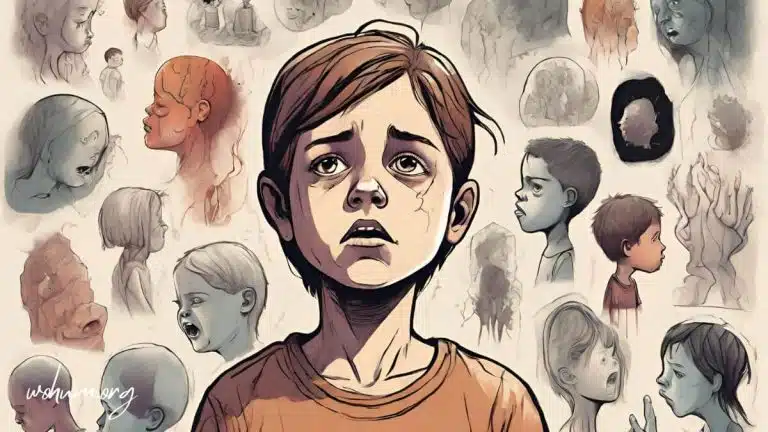What Looks Like Autism but Isn’t: 10 Conditions Similar to Autism


OCD thrives on intrusive thoughts and repetitive actions. Picture this: an individual washes their hands repeatedly, besieged by the thought that they’re contaminated.
Diagnosis usually involves psychiatrists or psychologists and employs a blend of clinical interviews, specialized questionnaires, and possibly brain scans.
Sensory Processing Disorder (SPD) is the brain’s inability to sort, interpret, and respond to sensory input. In everyday language, it means struggling to make sense of the world through the five senses: sight, smell, touch, taste, and hearing. Picture this—you walk into a room, and suddenly, the texture of the carpet feels like needles against your skin. Sounds chaotic, right?
Diagnosing SPD usually involves occupational therapists conducting an evaluation. Parents often notice the symptoms early on, though sometimes they may mistakenly assume their child is merely ‘fussy’ or ‘difficult.’
Antisocial Personality Disorder isn’t about shunning social activities; instead, it’s a psychological condition characterized by a consistent disregard for societal norms and the feelings of others.
The diagnosis of ASPD generally requires psychiatric evaluation, often initiated due to legal issues. It’s usually diagnosed in adulthood.
ADHD is a neurodevelopmental disorder affecting both adults and children. Symptoms include difficulty maintaining focus, hyperactivity, and impulsive behavior. Imagine feeling like you have eight TV channels playing in your head, all at the same time. Overwhelming, isn’t it?
Also Read: ADHD in Children: Symptoms, Diagnosis, and Treatment
Diagnosis usually involves behavioral assessments and may start with a teacher or parent noticing attention issues in a young child.
Intellectual Disability, formerly known as mental retardation, encompasses limitations in intellectual functioning and adaptive behaviors. Simply, grasping new skills or concepts is an uphill task. Imagine being stuck in a dense fog while navigating daily life activities.
A psychological assessment is critical for diagnosis, usually involving IQ testing and evaluating adaptive behaviors.
Speech delay is a condition where a child develops verbal abilities slower than typical for their age group. This may involve delays in using words, forming sentences, or understanding spoken language.
Explore related article: Language Skills for 3-Year-Olds: Speech Milestones & Checklists
Speech pathologists generally handle the diagnosis, often using a variety of speech and language tests. Parents should also note that excessive screen time can lead to speech delay—a sign often associated with Autism.
Selective Mutism is an anxiety disorder characterized by an inability to speak in specific settings. Picture feeling a wall go up between you and the ability to articulate, but only in particular situations.
A mental health professional often diagnoses selective mutism, usually initiated by a parent or teacher who notices the child’s inability to speak in specific settings.
Cognitive Developmental Delay implies slower than typical development in intellectual and adaptive abilities. Think of a child who struggles to keep up in class or takes longer to grasp new skills.
Also Read: Recognizing Developmental Delays in Children
Early intervention specialists and developmental pediatricians usually lead the diagnosis, involving screenings and developmental evaluations.
Social Anxiety Disorder (SAD) manifests as excessive anxiety in social situations. Imagine an internal alarm that incessantly rings when faced with social interactions, even simple ones like ordering a cup of coffee.
Explore: Understanding Anxiety in Children: Signs and Symptoms
Mental health professionals usually diagnose it through interviews and questionnaires.
Reactive Attachment Disorder (RAD) is a rare but severe condition arising from unmet basic needs for comfort, affection, and nurturing from caregivers. It’s as if the safety net caregivers should provide has gaping holes.
A comprehensive evaluation by child psychologists or psychiatrists, often involving interviews with caregivers, is necessary for diagnosis.
Understanding the nuances of conditions like Sensory Processing Disorder, Antisocial Personality Disorder, ADHD, and others helps avoid mistaken diagnoses and sets the stage for effective treatments. Awareness and education remain the building blocks for dispelling myths and fostering empathy. It’s not just about labels; it’s about lives. From tailored therapies for ADHD to specialized care for Reactive Attachment Disorder, identifying the actual issue is the first step toward meaningful progress.
With this comprehensive guide, you can discern the subtle differences that distinguish autism from other conditions that may seem similar on the surface but are fundamentally different. Knowledge is power, and in the realm of mental health, it can be transformative.
Explore related resources:
PTSD symptoms like social withdrawal and repetitive behaviors can mimic autism. However, PTSD usually stems from a traumatic event, unlike autism, which is a developmental disorder.
Indeed, traumatic experiences can lead to behaviors like social isolation or communication difficulties, resembling autism. Nonetheless, the root causes differ substantially.
Yes, the repetitive behaviors in OCD can resemble the repetitive or restricted behaviors in autism. But in OCD, these behaviors are anxiety-driven, whereas in autism, they might offer comfort.
While both can involve mood swings and social difficulties, they are fundamentally different. Bipolar disorder revolves around extreme mood shifts, which isn’t a core characteristic of autism.
Autism typically manifests in early childhood, often around the age of 2, whereas bipolar disorder is usually diagnosed around the ages of 20 to 30.
There’s overlap, particularly in social awkwardness and attention issues. Yet ADHD lacks the restricted, repetitive behaviors that are hallmark traits in autism.
Both can involve emotional instability and issues with interpersonal relationships. However, BPD frequently manifests as intense mood swings and fears of abandonment, which aren’t typical autism traits.

Get Your Resources to Your Email Now!